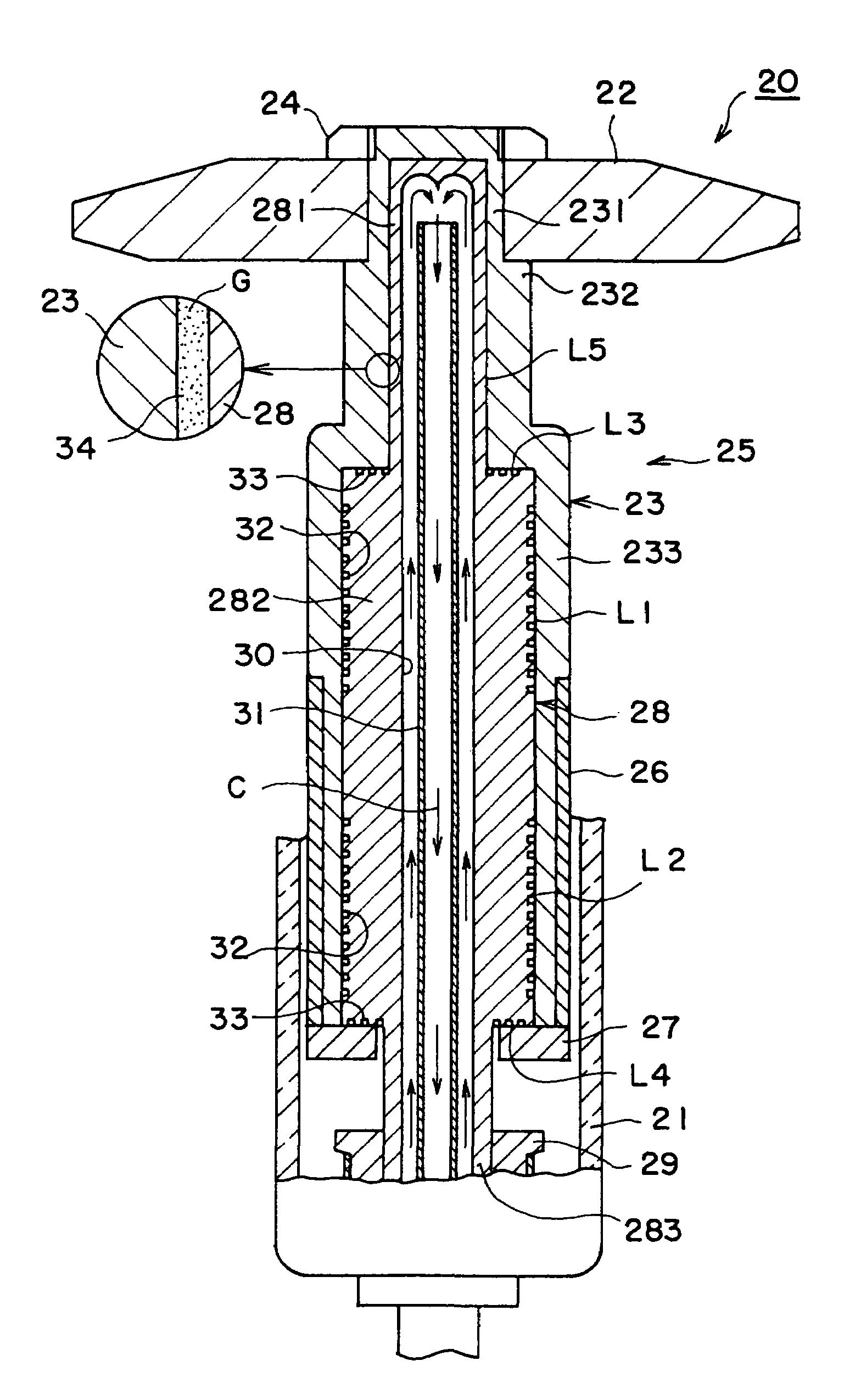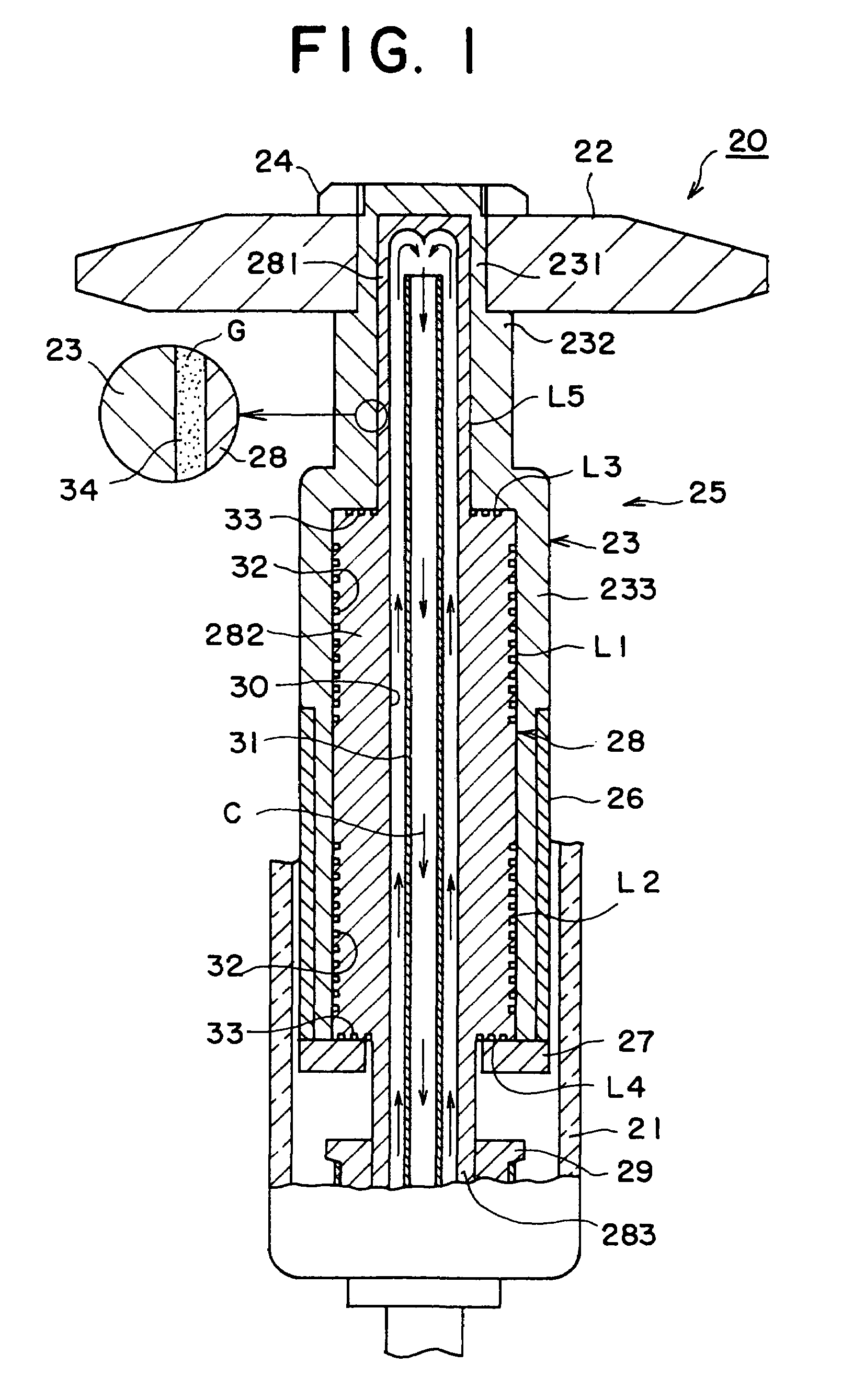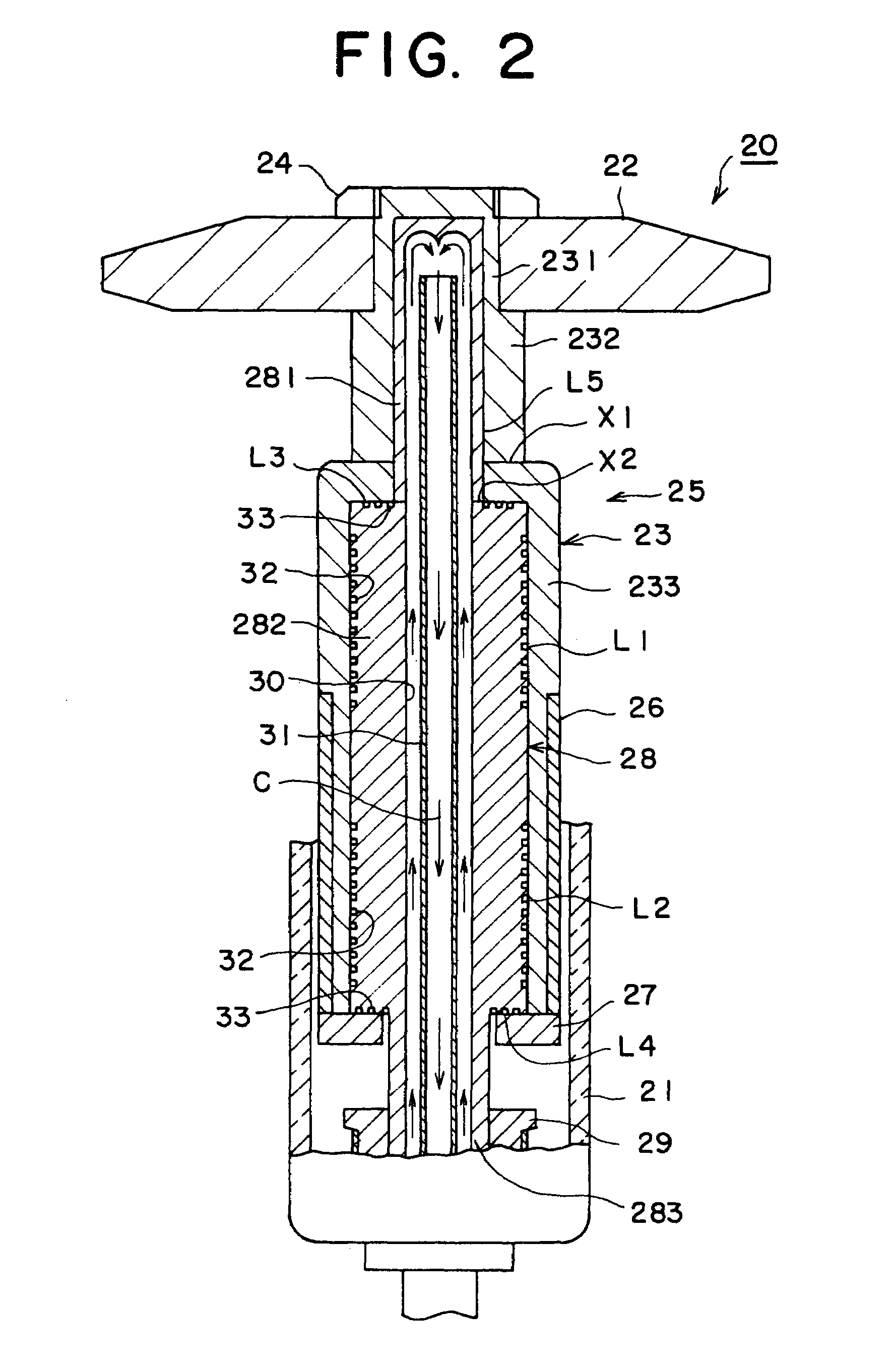Rotary anode type X-ray tube
a rotary anode and x-ray tube technology, applied in the direction of x-ray tubes, sliding contact bearings, bearing cooling, etc., can solve the problems of inability to achieve adequate heat transfer effect, disturbance of enhancement of heat transfer effect, and inability to maintain stable bearing operation, etc., to achieve the effect of improving the cooling efficiency of the anode targ
- Summary
- Abstract
- Description
- Claims
- Application Information
AI Technical Summary
Benefits of technology
Problems solved by technology
Method used
Image
Examples
first embodiment
[0049]First, embodiments of the rotary anode type X-ray tube according to a first aspect of the invention will be described. FIG. 1 is a vertical sectional diagram showing a structure of the main part of the rotary anode type X-ray tube according to the first aspect of the invention. A rotary anode type X-ray tube 20 shown in FIG. 1 has, for example, a glass vacuum vessel 21. The vacuum vessel 21 shown in FIG. 1 is its part. A disk-shape anode target 22 for emitting X-rays is disposed in the vacuum vessel 21. The anode target 22 is formed of a heavy metal or the like.
[0050]The anode target 22 is fixed to the outer peripheral surface of a cylindrical rotary body 23 of a high melting-point metal with a nut 24. The rotary body 23 configures a rotating portion of a rotating mechanism 25 for rotatably supporting the anode target 22. The rotary body 23 has a first section 231 located on the top, a second section 232 having an outside diameter larger than that of the first section and loca...
second embodiment
[0070]In the rotary anode type X-ray tube 20 of the second embodiment, the bearing surfaces of the bearing areas L1 to L4 are formed of a metal material mainly consisting of iron. The metal material mainly consisting of iron can be fabricated with ease, and the bearing can be produced with high accuracy. And, the metal mainly consisting of iron is a ferromagnetic material, so that an efficiency of magnetic connection with the rotating magnetic field can be improved. Forming a ceramic film of titanium nitride or the like on the non-bearing surface of the non-bearing area L5 can further enhance erosion resistance against the liquid metal lubricant.
[0071]Then, a third embodiment of the rotary anode type X-ray tube according to the first aspect of the invention will be described with reference to FIG. 3. In FIG. 3, same numerals are used to denote same parts in FIG. 1 and FIG. 2, and a repeated description of those portions is partially omitted. In the rotary anode type X-ray tube 20 of...
fourth embodiment
[0078]In the rotary anode type X-ray tube 20 the non-bearing area L5 is in a shorter distance (spatial distance) from the anode target 22 than the bearing areas L1 to L4. In other words, the non-bearing area L5 is located where a time for heat transfer from the anode target 22 is shorter as compared with the bearing areas L1 to L4. Therefore, heat is mainly transferred from the rotary body 23 to the stationary body 28 through the non-bearing area L5. Therefore, the quantity of heat transferred through the bearing areas L1 to L4 is decreased, and the bearing areas L1 to L4 are suppressed from having a temperature increase. As a result, the bearing surface roughness and a change in bearing gap size are decreased, and a stable bearing operation can be maintained.
[0079]Besides, according to the structure of the fourth embodiment described above, the stationary body 28 is fixed to the vacuum vessel 21 at two upper and lower portions, and the bearing areas L1 to L4 are disposed on one si...
PUM
 Login to View More
Login to View More Abstract
Description
Claims
Application Information
 Login to View More
Login to View More - R&D
- Intellectual Property
- Life Sciences
- Materials
- Tech Scout
- Unparalleled Data Quality
- Higher Quality Content
- 60% Fewer Hallucinations
Browse by: Latest US Patents, China's latest patents, Technical Efficacy Thesaurus, Application Domain, Technology Topic, Popular Technical Reports.
© 2025 PatSnap. All rights reserved.Legal|Privacy policy|Modern Slavery Act Transparency Statement|Sitemap|About US| Contact US: help@patsnap.com



